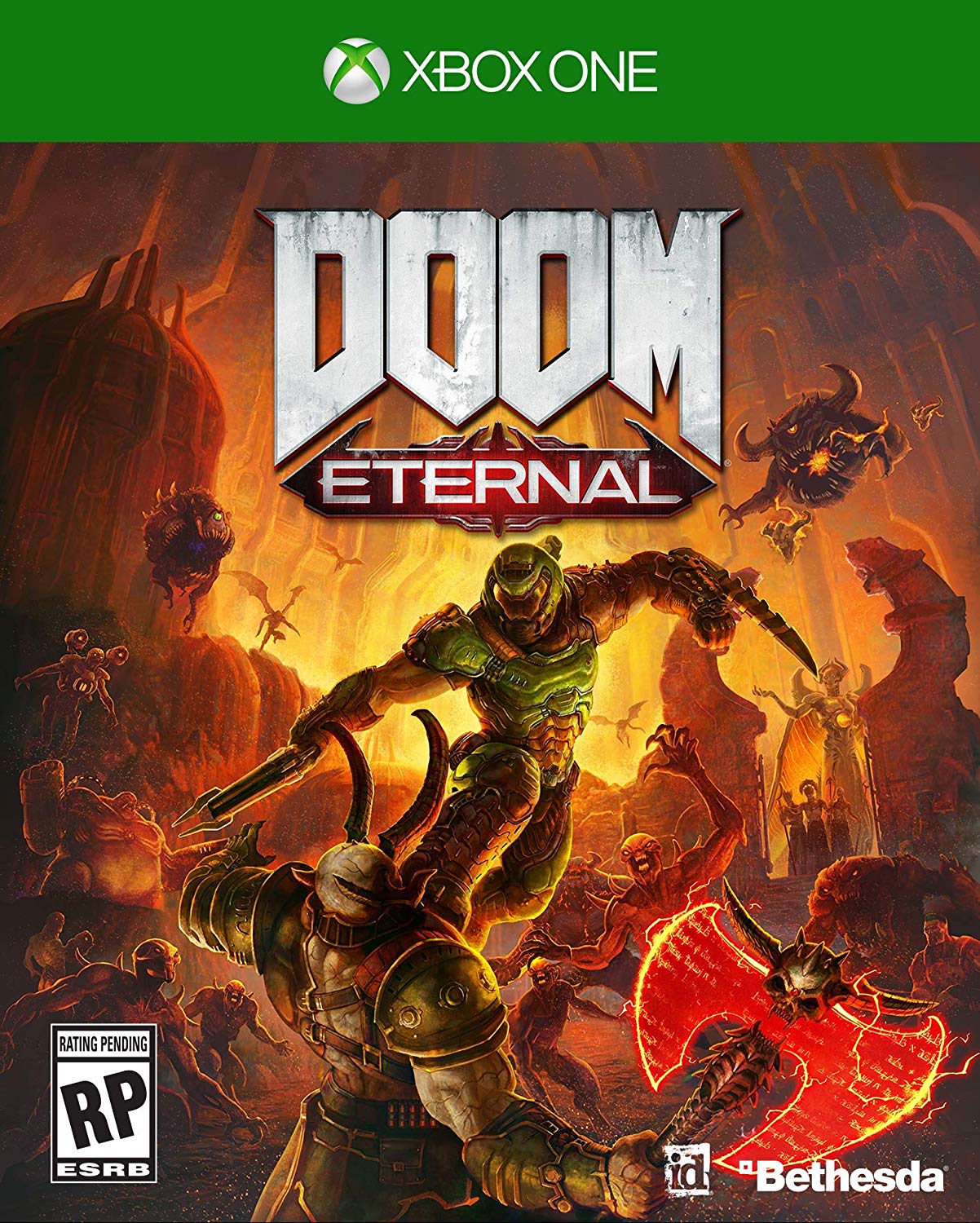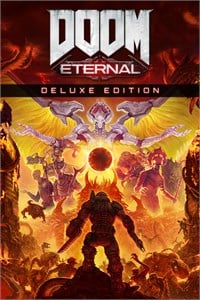Doom Eternal preview: More junk food ... with a nutritional twist
'Even the gore and the destructible demons have purpose,' says creative director Hugo Martin.
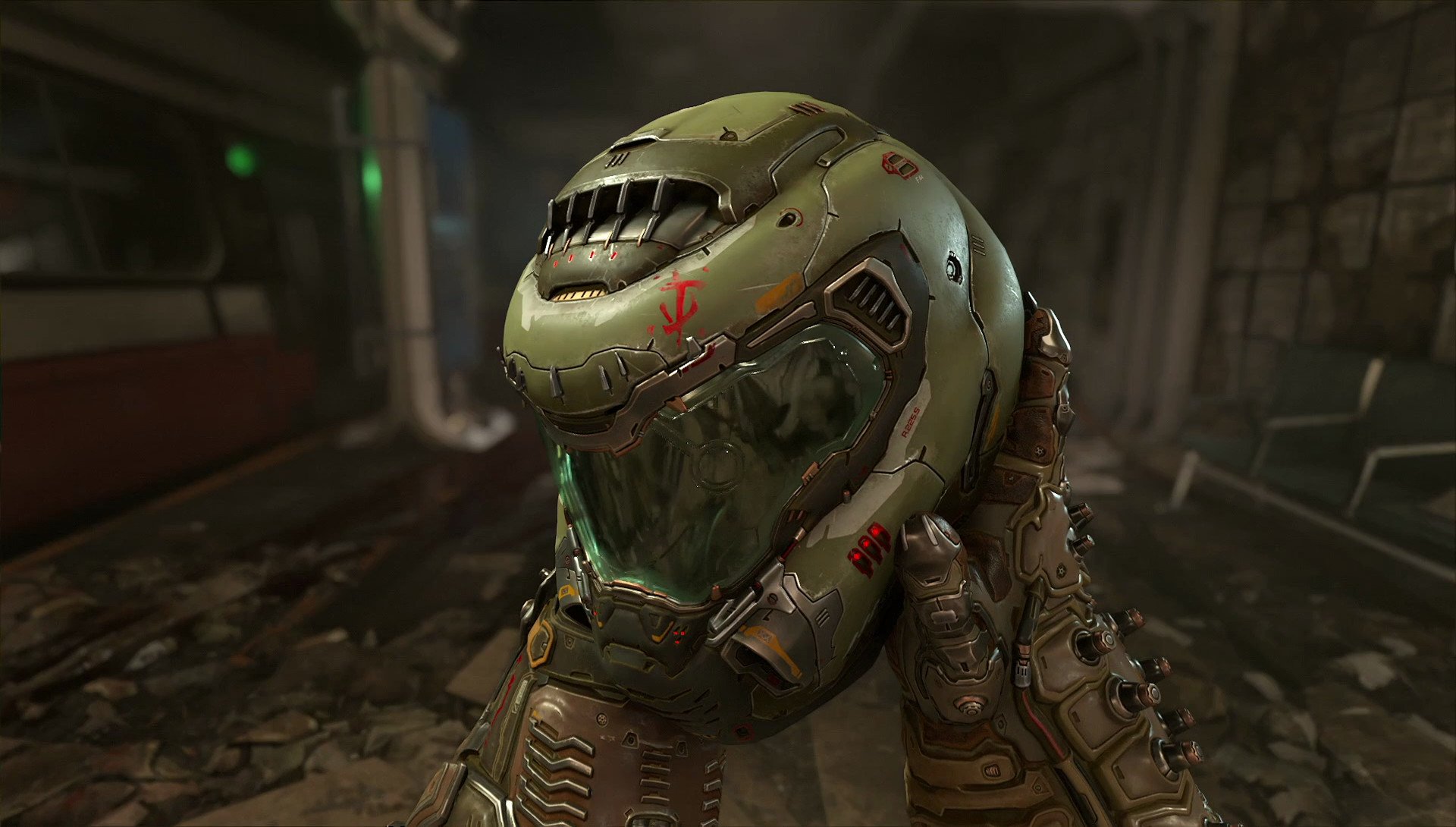
If Hugo Martin, the creative director at id Software, is to be believed, Doom (2016) was just the beginning. It was on the track towards what the company wanted to do with the retro, hyper-violent shooter franchise, but there's so much more to explore. In an interview with me at a preview event, he likened Doom Eternal to Evil Dead 2 — a movie that remade the original but added more detail that shaped the series for decades to come.
Doom Eternal, expected in March 2020, is the sequel to Doom (2016), which revamped the classic series visually and technically. It was still the cartoonishly violent shooter that people were familiar with, but it took the action to larger, crazier heights. It was a game that both hearkened back to another era and fit in nicely with the gaming environment that existed in 2016. For Eternal to be remotely as successful, it needed to go even further and do more. Like Evil Dead vs. Evil Dead 2, Eternal needed to redo a lot of the elements that made Doom (2016) great but expand upon them to hopefully create a more enriching experience.
At the aforementioned preview event, I was able to play a couple of hours in the new campaign. I got to rip and tear to my heart's content, but there was so much more there. Not all of it works, but if the goal was to give Doom fans even more to latch their teeth into — more story, more gameplay, more resource management, more of the Doom Slayer, more environments — then Eternal succeeds.
"I think we can be fun. We can be light. We can have you just shooting and tearing apart demons but that doesn't mean that we can't also make it a smart game," Martin said. "We're leveling you up, you're thinking a lot more."
For the purposes of this preview, we played a PC version of the game on high settings.
How about 'aggressive resource management?'

A phrase that keeps popping up is "junk food with nutritional content," which Martin first mentions in his introductory remarks. It's a perfect descriptor for what Doom Eternal seeks to be: a game that satiates your sweet tooth for destructive, seemingly meaningless and over-the-top combat but also wants to challenge you with something more. That meant not throwing out what worked in the first Doom but bringing it to another level.
Doom Eternal continues the fast-paced, bonkers, gory game play from Doom (2016) but with a twist. Not only are you ripping and tearing up demons quickly and bombastically, but you now also have to manage your resources quickly. Martin calls it "aggressive resource management," which sounds like an oxymoron at first glance, but makes sense in practice.
All the latest news, reviews, and guides for Windows and Xbox diehards.
Doom Eternal is game that satiates your sweet tooth for destructive, over-the-top combat but also wants to challenge you with something more.
During my two hours (give or take) playing Doom Eternal, I learned immediately what he meant. Just like in Doom (2016), you're thrown into the action with nary an introduction. You get a gun and start destroying enemies, but then after a minute or two, you get the chainsaw. In the previous game, the chainsaw was a flashy weapon, but it was also a way to fill up on ammo. This could have become part of your strategy as you went through the levels, but it wasn't mandatory (I didn't use it nearly as much as the game probably wanted). Here, it's not only a key part of your arsenal but it's something you can't live without. It's like your gun in terms of importance.
Resource management is a much larger aspect of game play in Eternal because the team wanted to make the player think more. Shooting and tearing are fun, but there needs to be more to counteract monotony and to give players a challenge to overcome. So resources like ammo and health are more scarce this time around. There is some littered throughout each level, same as before, but there's less of it. In order to keep yourself alive, you need to utilize tools like the chainsaw regularly.
"In the early part of development… we just kind of threw the parts back together with new enemies... But it didn't really add up to fun," Martin said, explaining that the chainsaw change was to get the player not only thinking more about their resources but to get them to interact more with their arsenal. "If you use the chainsaw you would get ammo, and it was far more engaging to do it that way than when you just picked it up off the ground."
Along with weapons and your chainsaw, you have a new tool to help you gather resources: the Flame Belch. As you can guess from the name, it's a device that belches out fire. You can use this to light up enemies, which in return drop bits of armor. If you can kill the enemy after lighting it on fire you'll get even more armor.
You'll get reminded often of this need for more resources. I was only playing on the second hardest difficulty, but I was inundated with reminders that I had low health or was low on ammo. In the thick of a hectic combat area, it's easy to even ignore the large letters on your heads-up display (HUD) that tell you to find a demon to tear for health. When your gun automatically switches to the chainsaw and you're running around trying to find a demon weak enough to tear for ammo is where you realize that you need to tweak your strategy. It manages to break up the monotony of ripping and tearing without distancing the player too much from the game's overall mission. It's not "fun" in the typical sense of the word, but it is, as Martin often put it in our interview, "engaging."
"Even the gore and the destructible demons have purpose. Yes, I could rip off parts and it looks cool, but also I can disable parts that are actually really important," Martin said. "If I was to define the number one key ingredient to engagement, I have to be thinking. If I'm not thinking, I'm just bored."
Doom Eternal but remixed
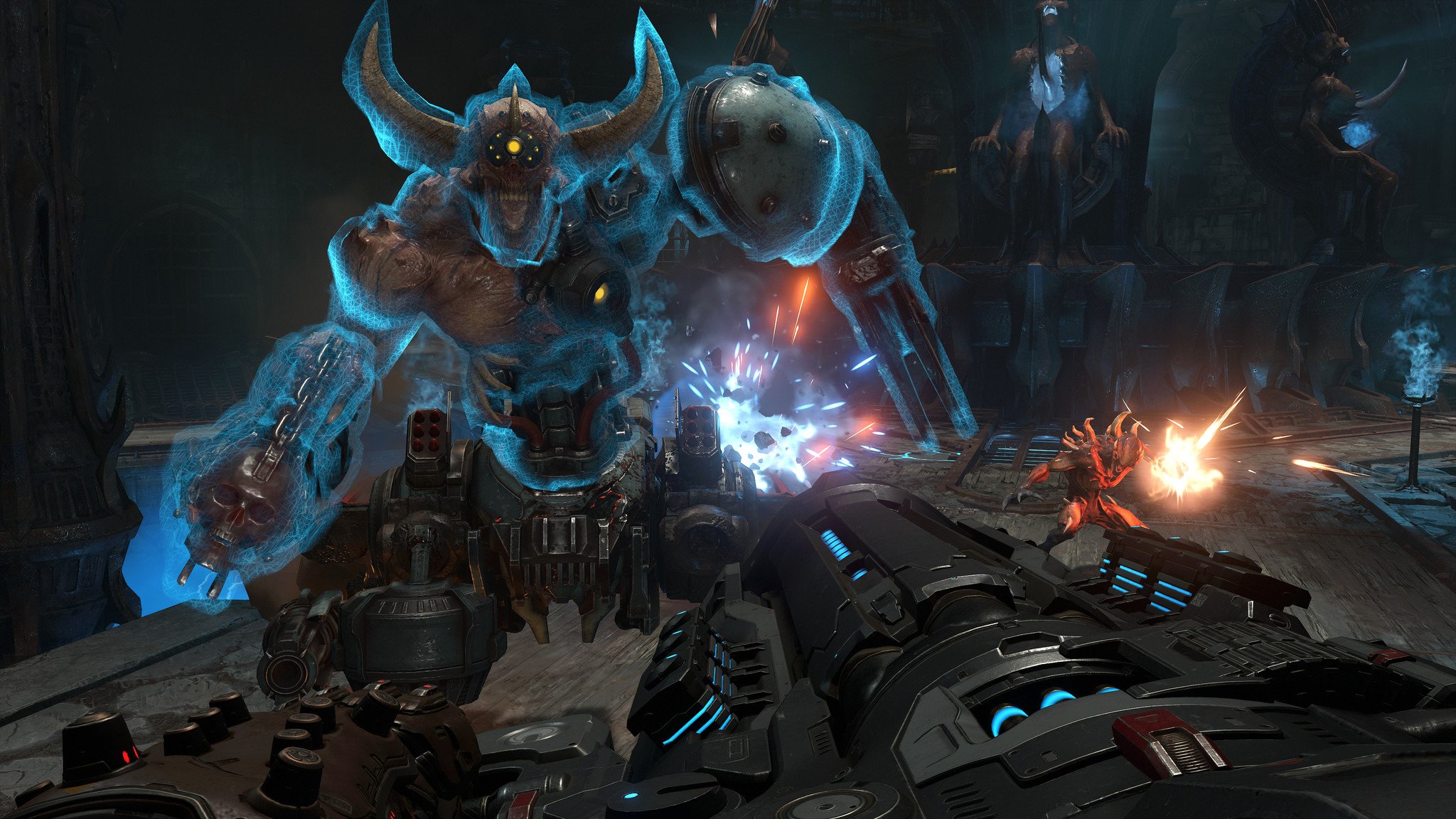
Another aspect of Doom (2016) that was remixed for Eternal is the puzzles. In the first Doom, there are countless jumping puzzles supported with green lights that show you where to go. The platforming aspects of these puzzles can be challenging, but the focus is never on the puzzles themselves but on them to break up combat sections and create physical depth in the levels.
Eternal is as much of a 3D platformer as it is a shooter.
Eternal, on the other hand, is as much of a 3D platformer as it is a shooter. These sections still serve the same purpose as they did in the first Doom, but they're more complex and larger. One section, in particular, gave me a lot of trouble. Not only did you have to get from platform to platform, but you had to time your jumps to get off of dropping platforms and leap in just the right way to hit a bar that you can swing off of. You die a lot in Doom Eternal, and the hope is that you use it to learn from your mistakes. It pays off the most in situations like this.
It offers another way to challenge the player and to expand on aspects of Doom (2016) but, more importantly, it creates another space for id Software to introduce more tools for players. There's a new Dash ability that you can unlock that adds even more space for platforming puzzles; a Meat Hook, which is a shotgun with a grappling hook attached; and an updated Rune system that doesn't require you to complete a dungeon to unlock new abilities (of course, this was replaced with Slayer Gates, so players won't miss out on optional areas).
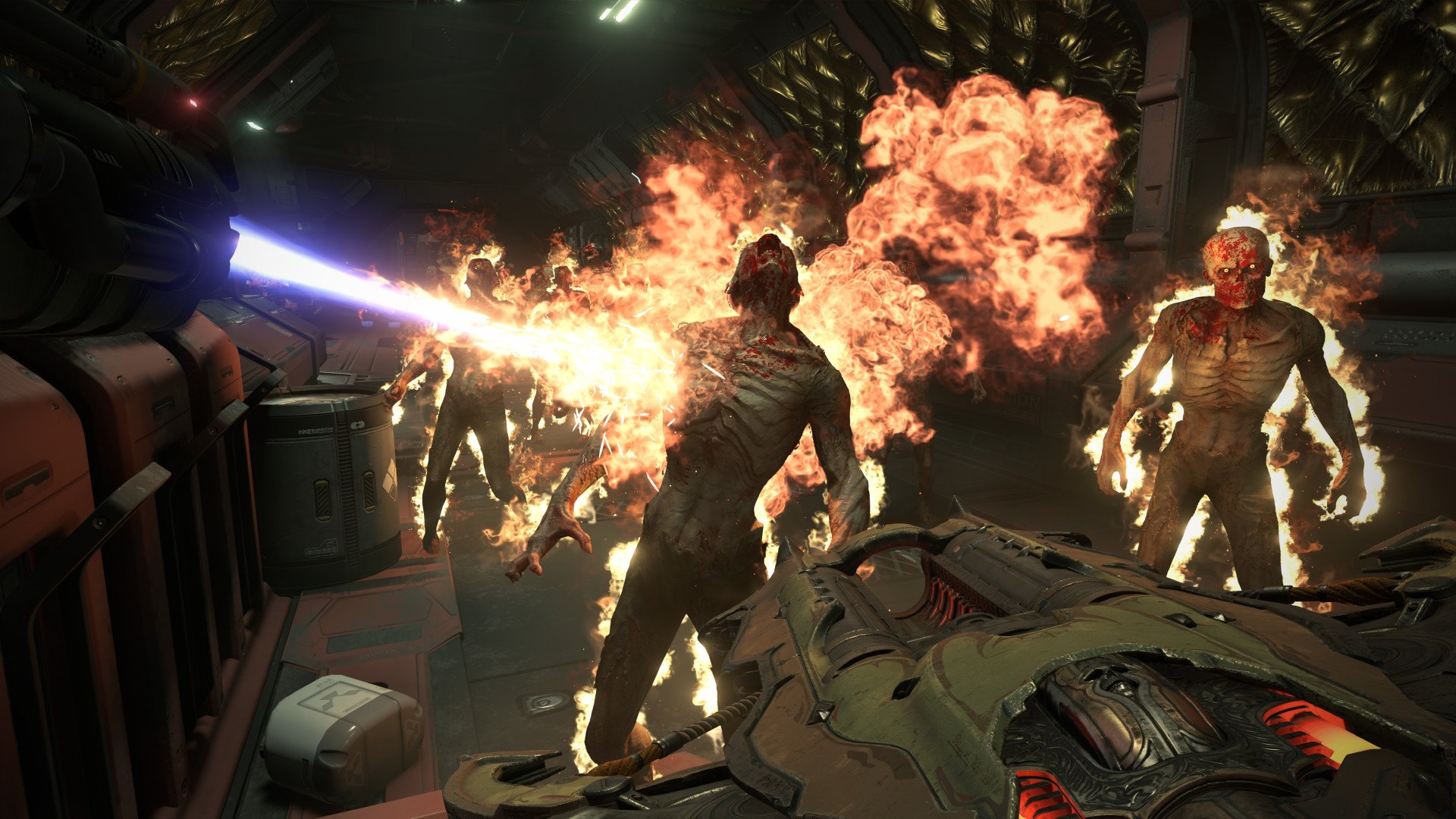
The skill system has also been diversified. Instead of just adding points into health or ammo capacity, you can unlock new abilities that go along with an increase in health. It allows the player to slightly tailor the play style to their preferences, even if the overall strategy of killing as many demons as possible is still the priority.
This all comes together to make progression more exciting. Martin stressed that the team wanted players to feel accomplished when they improved or learned something new, and that holds true in many areas (it helps that there are a lot of systems to play around with and improve in). Whether you learn a new skill, find a new weapon, or upgrade an ability, there are places to feel like you're moving forward. This becomes increasingly important over time as the game introduces even more enemies and puts Doom Slayer in even more intense situations.
Beyond some intricate touches, the team worked to redo how they hope the audience sees Doom. It's a "video game" in the most basic sense of the word, so there are elements that want to pay tribute to that. I was delighted to see a 1UP symbol floating in the distance, which does, in fact, give you extra lives once you work to pick it up. Doom (2016) was already a retro throwback, but Doom Eternal is even more forthright about it.
More everything, even more … story?
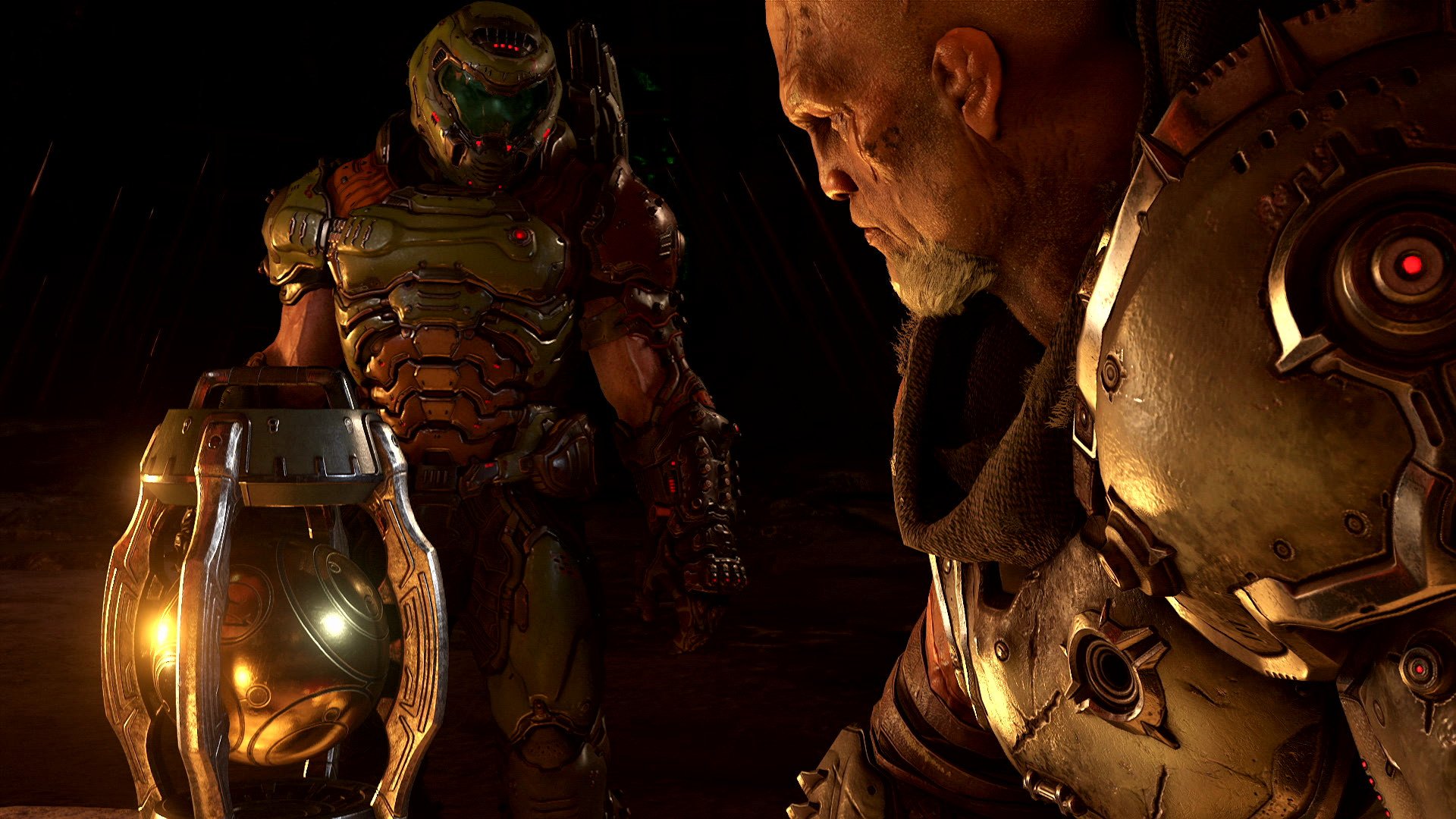
A huge criticism of the first game, according to Martin, was that some of it felt repetitive. That's been addressed in a lot of areas. In the first two levels, you hit around three different landscapes and hit a surprising snowy section in the third, for example. The same goes for the combat, the tools at your disposal, and now the story elements. However, did the story need correcting? Did we absolutely need more plot?
The Doom Slayer does not care for your plot. He spits in the face of your story.
There has always been a disconnect between the Doom Slayer and what's going on around him. He's obviously a cipher to hit different narrative elements, to move the game forward and give the excessive combat purpose. Those elements, overall, aren't as important as the result, which is to get the player to another area.
He doesn't take the time to listen to Samuel Hayden, for instance, as he tells him to not destroy the Argent facility but he does it anyway because Doom Slayer does not care for your plot. He's apathetic, which is funny as a character and narrative choice, but in context, it shows how much the player needs to know. Players can engage with the story if they wish (and they should since a lot of the lore shows a lot of creativity and a dedication to the source material), but the Doom Slayer gives them the bare minimum to work with, which sets the tone for the rest of the game.
On the other hand, Doom Eternal makes him a key component, which feels odd in some areas. After one sequence you meet a character called the Betrayer, who gives you a MacGuffin that you need to take to another part of the level and combine with another MacGuffin. Instead of reacting in his typical uncaring way, the Doom Slayer takes the time to stare at the Betrayer through his helmet, take the MacGuffin, and allow the Betrayer to comment on the situation. The Doom Slayer is an active player here instead of an avatar, which feels out of character. It also draws attention to how meaningless a lot of the plot elements are. In Doom (2016) it was a joke how little the pieces mattered, even though if you did the reading, it all made sense. In Eternal, it's key.
This might work for some as it gives the Doom Slayer more of a personality. Unfortunately, it doesn't work for the purposes of letting the player experience the plot, especially since the plot is nonsense. Sure, it's always been over-the-top and ridiculous, and that's all been in line with what Doom is, but there's so much here revealed in data, collectibles, and exposition dumps that it becomes overwhelming.
Bottom line on Doom Eternal
Doom Eternal is a lot more of what was already a lot of game in Doom (2016). There is more to explore and more to play around with. There are more tools, more strategy to go along with even more enemies, more story beats to experience, and, of course, more ripping and tearing. The fact the id Software team was able to make the latter point even more complex by adding resource management into the mix is a testament to what it wanted to focus on with this new entry.
The game is both an update and a throwback — even more so than the first Doom was — and the attention to detail is commendable. Whether it'll translate to a satisfying experience in all of its ambition remains to be seen; Martin says the full game will have over 22 hours of game play so there's plenty of time to see it come to fruition.
At the very least, players will get more of the basic Doom they love; ripping and tearing and more ripping and more tearing.
Related: Our full DOOM Eternal Xbox One review

Carli is the Former Gaming Editor and Copy Chief across Windows Central, Android Central, and iMore. Her last name also will remind you of a dinosaur. Follow her on Twitter or email her at carli.velocci@futurenet.com.
